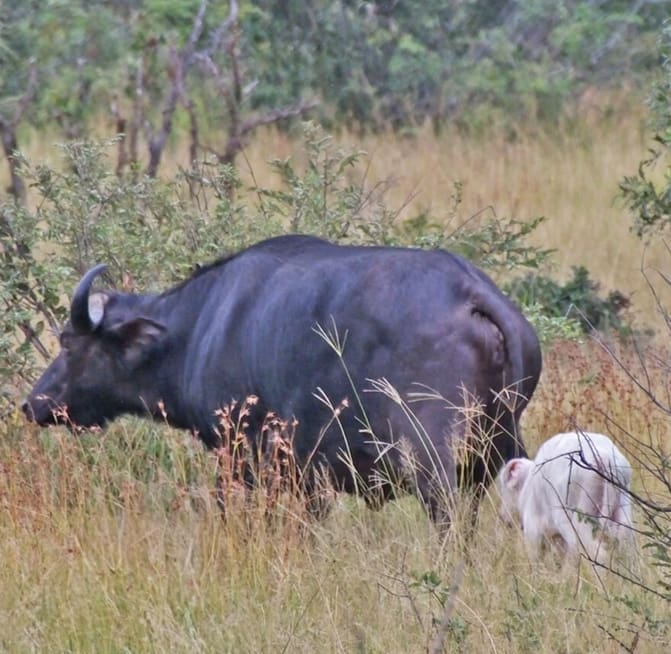Unveiling Nature’s Palette: A Rare Encounter in Kruger National Park
As the golden sun spills over the vast expanse of Kruger National Park, a scene unfolds that encapsulates the sheer unpredictability of nature. Among the myriad of dark silhouettes that make up the buffalo herd grazing near Satara Rest Camp, one unusual member stands out—an oddly pale figure, almost ethereal in appearance. This is not just another animal sighting but a spectacle that stops seasoned wildlife enthusiasts and casual visitors alike in their tracks.
Erin Simon, a fervent admirer of the natural world, had the fortune of witnessing this rare phenomenon. While anticipating the typical displays of lion prowess, it was a small, snow-coated buffalo calf that stole the show. Unlike its darker kin, this calf sported a coat as white as the clouds above, a stark contrast to the usual tawny landscape of the savannah.

The peculiar coloration of this young buffalo is attributed to leucism, a genetic condition characterized by reduced pigmentation. Unlike albinism, which completely lacks melanin, leucism results in partial loss, giving animals a patchy or entirely pale appearance while leaving the eyes their normal color. This genetic twist does not just add a splash of unexpected color to the herd; it poses questions about survival and acceptance in the wild.
Despite the calf’s standout appearance, it seemed well integrated with its herd, unbothered by its distinctiveness. This acceptance by its herd members is heartening, yet it prompts reflection on the challenges it might face due to its visibility, especially from predators. Erin, reflecting on the day, pondered whether this “funky color job” would be a bane or a boon as the calf matured in the unpredictable theater of the wild.
Such sightings, while spectacular, are emblematic of broader conservation issues. They remind us of the genetic diversity that exists within seemingly homogeneous populations and the importance of protecting such anomalies for the health and survival of species. This rare sighting at Kruger, beautifully captured by LatestSightings.com, serves not only as a testament to the unpredictability of nature but also as a call to action to support conservation efforts that allow these unique creatures to thrive in their natural habitats.
READ NEXT: THE MOST DANGEROUS ANIMALS IN AFRICA
